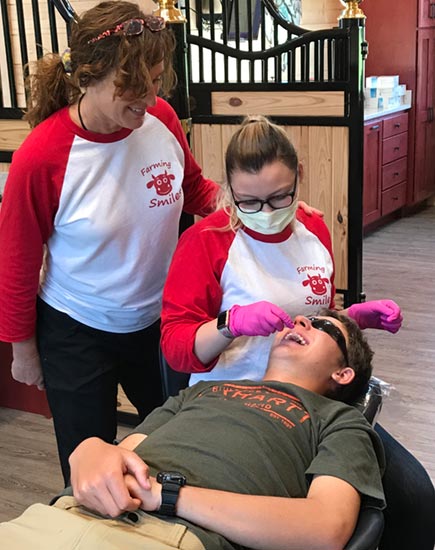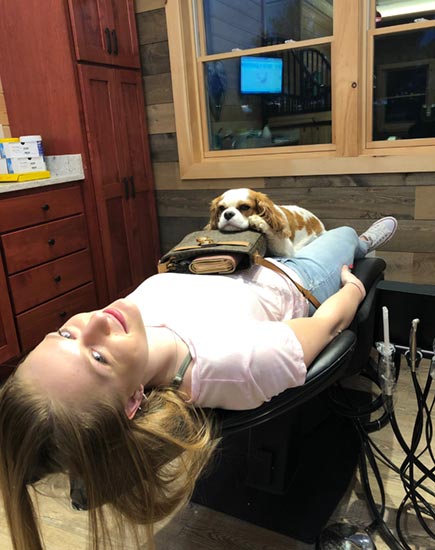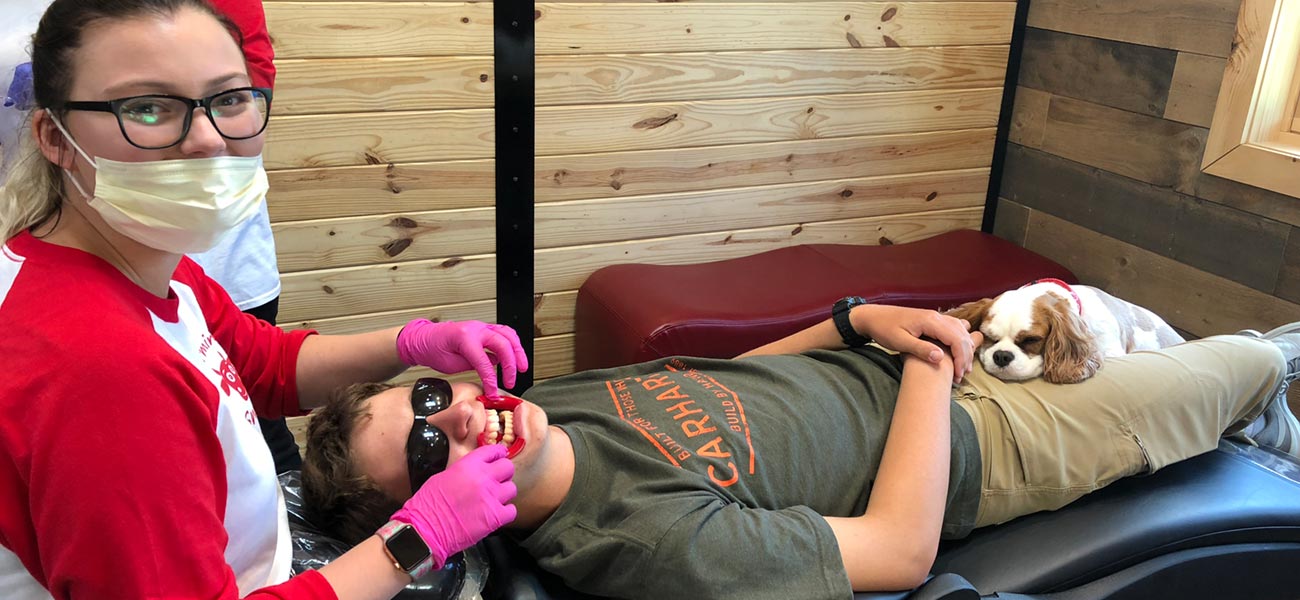Modern Orthodontic Treatment
The field of orthodontics isn’t what it used to be, so when it comes to treatment, you want an orthodontist who is both modern and experienced. Dr. Donna Panucci has been providing superior orthodontic treatment for children, teens and adults for over 24 years using the latest technology and treatment methods available in orthodontics.

Early Treatment
The American Association of Orthodontists recommends that most children should be screened by an orthodontist by the age of seven as a means of preventing major orthodontic irregularities later in life. An early screening will allow Dr. Panucci to determine if orthodontic treatment is necessary, as well as when the best time for treatment should occur. Here are some of the benefits of early treatment should your child display early signs of orthodontic irregularities:
- Regulates the width of upper and lower dental arches.
- Aids in proper jaw growth and creates space for permanent teeth.
- Helps guide erupting teeth into a more favorable position.
- Can eliminate a need for extraction of permanent teeth.
- Reduces the risk of cavities and tooth decay.
- Reduces the risk of speech abnormalities and bruxing (grinding of teeth).

Adolescent Treatment
Although earlier treatment is important for identifying and correcting early orthodontic issues, adolescence is the most ideal time for orthodontic treatment for several reasons.
- Most teens have all of their adult teeth generally by the age of 11-13, which is when issues such as bad bites, crooked teeth, and gaps are more easily identified.
- Teens have higher metabolisms due to puberty, which can help reduce the discomfort occasionally experienced with braces, as well as shorten the amount of time necessary for orthodontic treatment.
- Orthodontic treatment is common amongst teens, which means that during this age range, braces are more socially acceptable.

Adult Treatment
Orthodontics isn’t just for children and teens. A beautiful smile makes for a great impression in work and social situations. Furthermore, advancements in treatment options such as Invisalign, make orthodontic treatment more appealing for adults
Adults can benefit from orthodontic treatment in many ways, including:
- Correct relapse after previous orthodontic treatment due to lack of long-term retainer wear.
- Improve the ability to brush and floss, especially for crowded or overlapping lower front teeth.
- Align the teeth to create a more aesthetic and beautiful smile.
- Create a better or more comfortable bite and ability to chew.
- Close spaces between the teeth.
- Reduce excessive wear on the teeth due to grinding or poor bite.
- Address missing teeth.
- Jaw surgery to correct discrepancies between the upper and lower jaws.
Two-Phase Treatment
In many cases, future orthodontic issues such as extractions, impacted teeth, and jaw surgeries can be avoided with early treatment. This is broken down into two phases: the growth phase and the alignment phase.
Phase 1: The Growth Phase
Beginning around the age of seven, the growth phase lasts approximately 12-18 months, with scheduled visits to our office every eight to ten weeks. Phase 1 treatment is achieved with a few simple appliances and partial braces only, to aid in expanding and reshaping jaws to make room for permanent teeth, improving the bite, and aligning permanent front teeth.
After the goals of Phase 1 are met, appliances and braces are replaced with retainers to allow for remaining permanent teeth to erupt. Retainer time ranges between 12-36 months.
Phase 2: The Alignment Phase
The alignment phase involves braces on all teeth and begins when most of the permanent teeth have erupted. Treatment time ranges from 12-24 months and aids in aligning the newly erupted permanent teeth, as well as obtaining total bite correction.
TMJ & Headache Treatment
Temporomandibular joint disorder, more commonly known as TMJ syndrome, is a malfunction of the hinge or Temporomandibular joint connecting the upper and lower jaw. There are several symptoms that indicate TMJ syndrome, including:
- Stiff or sore muscles around the jaw area.
- Grinding or clenching teeth.
- Pain in the jaw area when eating or yawning.
- Frequent head or neck pain.
- Popping or clicking of the jaw when opening your mouth.
- Difficulting using your front teeth to bite or chew.
Although there is no single cure for TMJ, Panucci Orthodontics will work out the best treatment plan to significantly reduce symptoms and pain.

